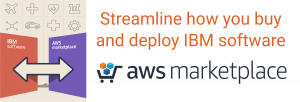DoDAF 2.0 Modeling with IBM Rational System Architect | Packaged Service
This course provides an introduction to using IBM Rational System Architect. Working with a simple scenario, you learn about the Rational System Architect environment, including an overview of:
- Supported methodologies and notations, Encyclopedia concepts, Drawing techniques, Model components, Reporting.
The example spans the enterprise architecture (EA) layers. A number of standard notations are used to capture and present the information. Emphasis is placed in relating model artifacts, and basic analysis techniques. This course is a combination of lecture and hands on exercises.
- You should have:
- Experience creating DoDAF 1.5 work products, or DoDAF 2.0 described models
- Working knowledge of IBM Rational System Architect
You should complete the following courses:
- Fundamentals of IBM Rational System Architect, V11.4, HQ133/QBV32 or earlier versions
WHAT YOU WILL LEARN:
- Model DoDAF 2.0 described models
- Capability modeling
- Operational modeling
- System/Service modeling
- Manage change across the DoDAF-described models
- Perform analysis on DoDAF models
- Report on information in the encyclopedia
- Collaborate with your team and stakeholders
COURSE OUTLINE:
- The basic theory of DoDAF 2.0
- The eight viewpoints of the DoDAF 2.0 architecture
- The levels of formal and informal architecture
- The mapping of new DoDAF 2.0 data elements to previous DoDAF data elements
- Support for DoDAF 2.0 in Rational System Architect
- Transitioning from DoDAF 1.5 to DoDAF 2.0
- Suggested DoDAF 2.0 development path
- Creating DoDAF-described models
- Analyzing and reporting on DoDAF models
The Primary target audience of this intermediate course are:
- System and software engineers
- Enterprise architects and engineers

